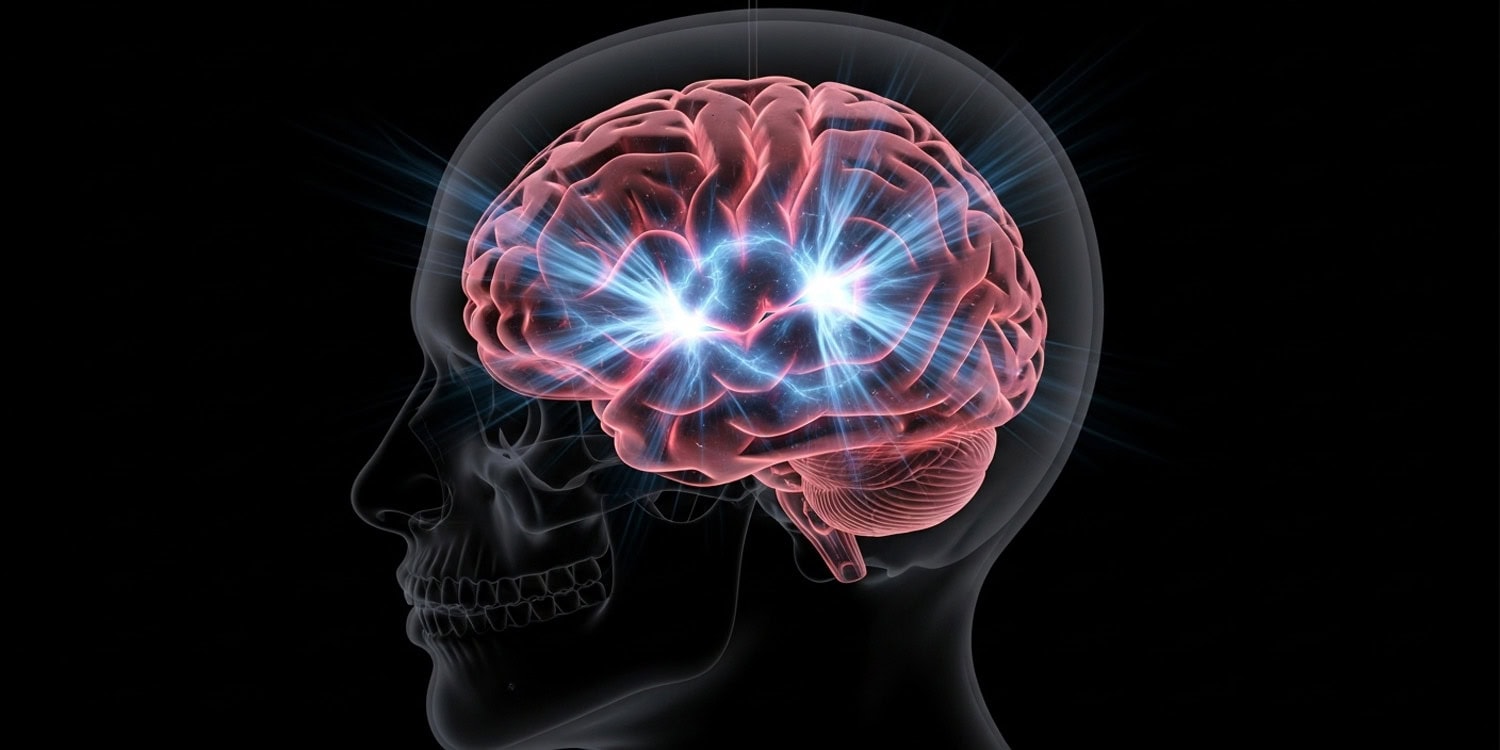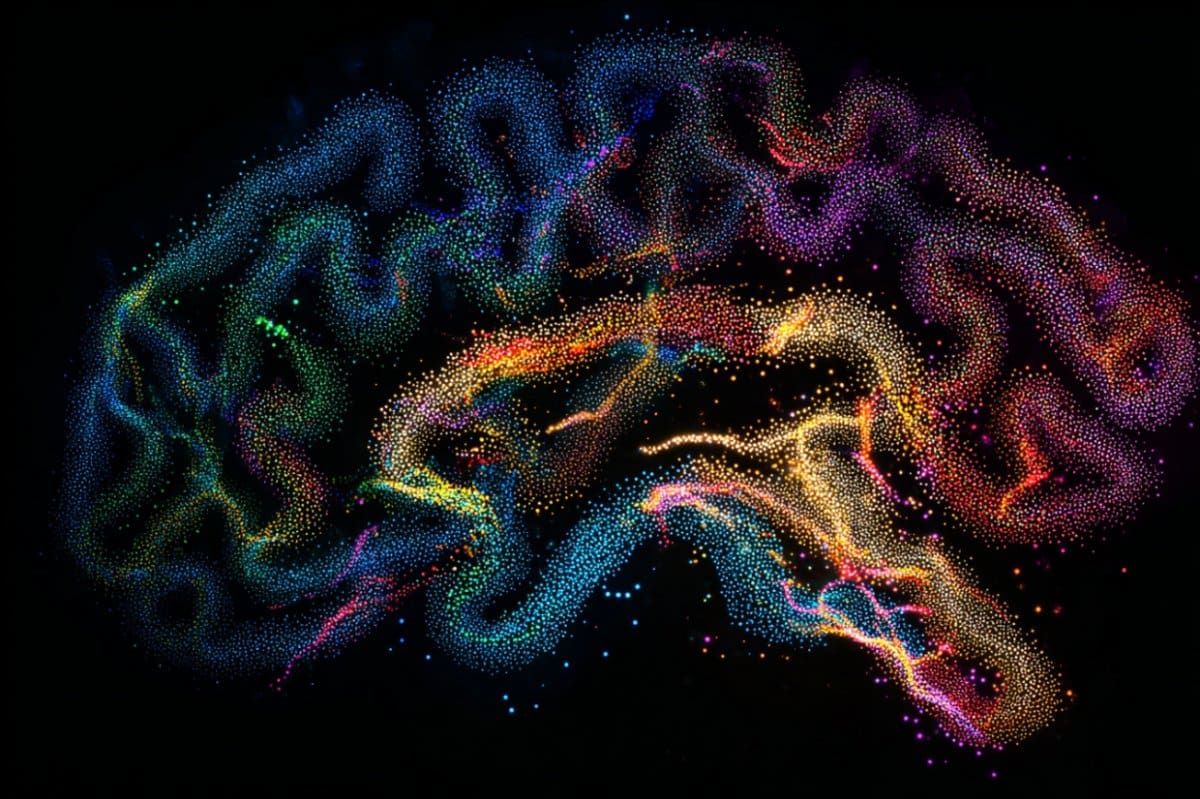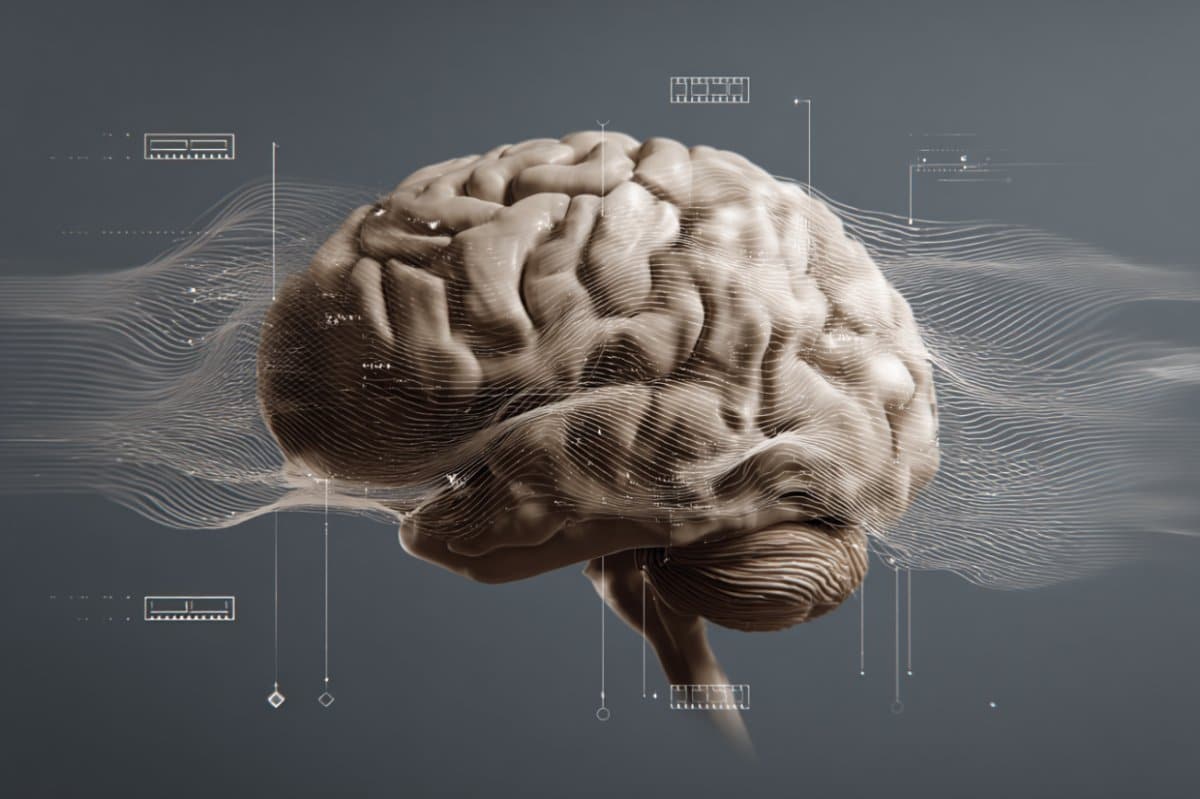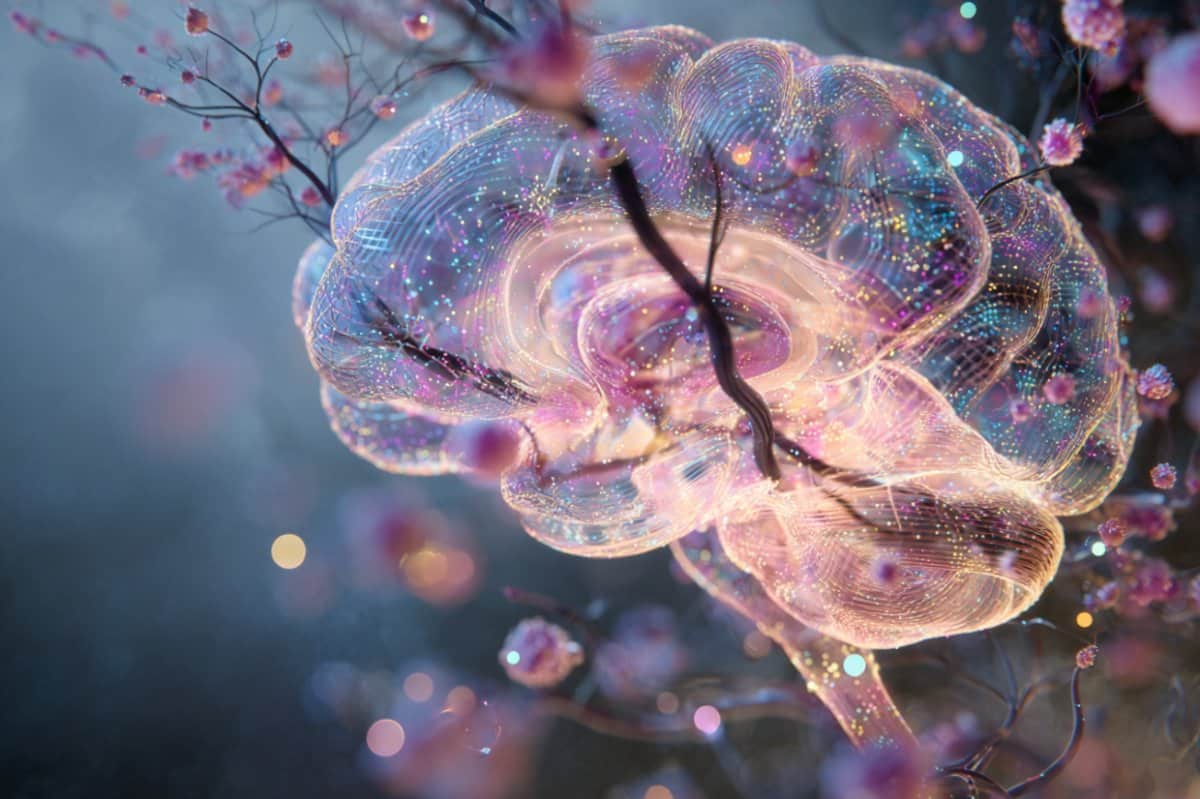T4K3.news
Groundbreaking study reveals brain emits light
New research shows that the human brain emits faint light that changes with mental states.

A new study shows the human brain emits faint light that changes with mental activities.
Neuroscience research reveals brain emits light that indicates mental states
A recent study in iScience demonstrates that the human brain emits faint light signals that change with mental states. Researchers discovered that these ultraweak photon emissions (UPEs) can be detected even in complete darkness. During experiments, UPE patterns shifted when participants engaged in tasks like closing their eyes or listening to sounds. This suggests that faint light could provide a new way to monitor brain activity through a technique called photoencephalography, which could be less intrusive than current methods. This research sets the stage for exploring new non-invasive options to study brain function, although further investigation is needed to refine the technique.
Key Takeaways
"We view the current results as a proof-of-concept demonstration that patterns of human-brain-derived UPE signals can be discriminated from background light signals in darkened settings despite very low relative signal intensity."
This quote highlights the main finding of the study, emphasizing its potential to track brain activity non-invasively.
"Photoencephalography would be maximally non-invasive with high temporal resolution, like EEG or MEG."
This statement illustrates the promise of the new method to monitor brain activity with minimal intrusiveness.
The implications of this study are profound. If UPEs are reliably linked to mental states, this could revolutionize how we monitor brain health. Current methods, such as EEG, require direct electrical activity measurement, which can be less comfortable for patients. This new light-based approach offers a promising alternative. However, challenges remain, including the need for larger participant studies and better detection methods to isolate specific light emissions. As scientists explore this territory, the potential applications could include early detection of neurological disorders and new insights into brain health across various populations.
Highlights
- Brain light could help monitor mental health.
- Is the future of brain monitoring light-based?
- Faint light emitted by the brain exposes hidden activity.
- This study may redefine how we observe brain functions.
Research on brain light emissions presents risks
The study explores an innovative approach to monitor brain activity. However, limitations such as small sample size and need for improved detection methods could affect its reliability and application in clinical settings.
Future advancements in this area may significantly alter brain research and patient care.
Enjoyed this? Let your friends know!
Related News

Peacocks Show Laser-Like Light Emission in Feathers

Groundbreaking findings on alcohol use disorder and brain chemistry

New study reveals link between sound stress and pain sensitivity

Study finds brain rewrites emotional maps of familiar spaces

Uranus emits more internal heat than previously known

Researchers uncover new mechanisms of memory structure

New findings reveal connections between humans and Neanderthals

Study reveals genes linked to mental illness activate in fetal stages
